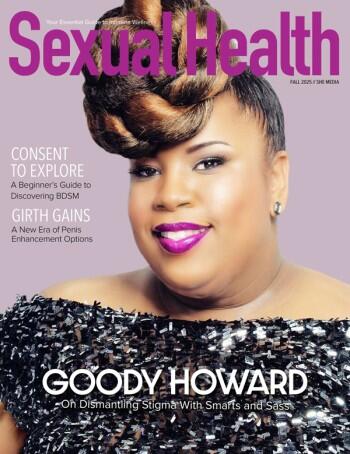It’s important to speak difficult truths, so today I want to tackle the trickiest truth of all: you sell more product in the short-term if you abandon inclusivity. Yes, you read that right, and if you’re in this industry you may know this already. Want to make a quick sale? You’re probably going to have more success if the picture you stick on your packaging or advert is of someone slim, white, young and cisgender. If you’re anything like me, that fact will make you deeply uncomfortable. But as I say, it’s important to speak difficult truths, and it’s only when we acknowledge the things that make us uncomfortable that we can start working out how to change the way things work.
The clearest demonstration of inclusivity harming sales is one I suspect many of you will have come up against: SEO. When you’re selling sex toys, so many customers still use terms like “toys for women” and “toys for men” that if you’re not hitting those keywords you’re losing out on important business. We know that women come with a variety of different genitals, but as yet the message hasn’t seeped through to enough consumers as to make those terms obsolete in search. One of the things we struggle with as a company is making sure we serve our audience of trans and non-binary customers (around 3 percent of our total customer base) while also giving the cis-het men who make up 55 percent of our base enough info to make purchasing choices.
Consumers are tuned into what society has told them ‘counts’ as sexy, and so they’re more likely to respond to what they know — it’s a vicious cycle.
Another finding from our customer research that left us scratching our heads: when you’re selling sex toys to older audiences (as we at Hot Octopuss aim to do a lot!), people over 55 tend to respond better to advertising that features younger models. In other age groups, people are more likely to respond to ads that feature people of similar ages, but the over-55s prefer images of younger people.
I know, it makes for difficult and frustrating reading — not to mention a challenge when coming up with new ad campaigns, product packaging or website images. Also a challenge: actually finding inclusive images to use! We spend a lot of time trawling stock photo sites to find “sexy” pictures that don’t feature the same-old (or should I say “same-young”) crop of slim, white, cis-gender models. There are some fantastic photo sites, which feature more diverse models — WoCInTech is a great example — but there are few that serve the adult market. If you’re a photographer looking to expand your portfolio — take note!
Not only is it easier to sell more product if you abandon inclusivity, it also makes your sales process simpler and therefore cheaper. Obviously this isn’t an approach I want to take, or would ever recommend, but I think it’s important to acknowledge that this short-term thinking can be really tempting. The root of the problem is that consumers have spent their lives being shown messaging around sex that feeds into all these harmful tropes: articles about sex illustrated with a white couple’s feet poking out the bottom of the bed, or product shots featuring slim white women. There are so many examples of it. How many articles about sex work do you see in the mainstream press that aren’t illustrated by a picture of some slim white legs next to an open car door? And how many “top sex positions” round-ups do you see which feature people over the age of 50? Consumers are tuned into what society has told them “counts” as sexy, and so they’re more likely to respond to what they know — it’s a vicious cycle. The only way to break the cycle is for companies to commit to better representation — age, race, gender, everything. Make sure our ads genuinely reflect the people we’re selling to, not just a narrow selection based on what others have done in the past.
The best solution for this, I think, would be some sort of industry charter: encourage other sex industry companies to sign up to a set of commitments to make sure our marketing is genuinely inclusive: not using Photoshop in our photography; actively seeking out diverse models; lobbying stock photo sites to include greater diversity in their “sexy” range, that kind of thing. And when I began drafting this article, that’s exactly what I wanted to do: give a powerful call to action to others in the industry to join in and do what we know to be right.
But I realized, that’s not how this is going to work. The short-term gains will always tempt some, and they won’t be swayed by an industry charter or any other gimmick of that kind. And that’s actually a good thing for the companies which do care about inclusivity, because alongside the difficult truths are some far more comfortable ones: millennials are more likely to respond to ads which are inclusive than those which are not; 63 percent of people say brands which represent diversity are more trustworthy; in direct comparisons between inclusive and non-inclusive ads, 70 percent of millennials will choose the inclusive brand.
The “diversity” problem is only a problem if the world stays the same forever. But the world is changing, and it’s not only a moral good but also a business benefit if sex industry brands change alongside it. I think the brands that recognize this are the ones that stand a better chance in the future. So I’m not calling for everyone in the industry to do this, but if you’re reading this piece I hope I’ve persuaded you to start thinking about how inclusive your practices are: instead of getting left behind, why not be part of shaping the future?
Julia Margo is the co-founder of Hot Octopuss.








